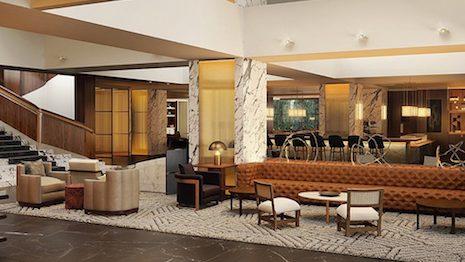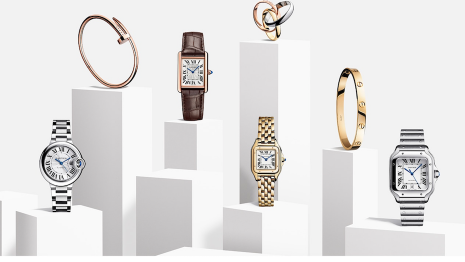By Daymon Bruck
The Emerging Stratification of Luxury Brands and their Audiences
As brand consultants for the past 35 years, we have been observing how the luxury industry has been shifting across all categories.
Many of the previous rules and approaches to this sector have become insufficient to create effective and strategic brand marketing.
Over the next month, we will be presenting sections of our latest White Paper, “The New Luxury Brand Playbook”, addressing these shifts with the hope to give ourselves, our clients and the industry a better framework within this new landscape.
Luxury brands and their audiences have become increasingly segmented, their unique behaviors and identifiers included. For some time now, the concept of a homogenized “luxury” category has become outdated, especially when it comes to brand building, marketing and audience engagement.
Several factors have been at work to create this shift in the market’s evolution requiring new systems and approaches for developing effective brand marketing.
As the luxury market continues to become increasingly competitive and crowded, the growing audience for this market has become younger, with values and interests in luxury that are quite different from previous generations. Many luxury brands and their businesses practices have also become more intent on commercialization and democratization: what was once a rare and exclusive category of goods and services is now more commonplace and obtainable.
This expansion of “available luxury” has accentuated a stratification not just between brands, products and services but also with the consumer’s relationship to brands that cater to their unique needs. To help make sense of these industry changes, we have been developing a new way to look at the luxury category to better visualize this changing market.
We have identified three tiers of luxury brands and audiences - each with unique rules, associations with status and customer strategies. Here is a very brief description of each as we define them today:
Standard Luxury
The first Standard Luxury tier contains the most widely known brands who have become synonymous with the general concept of luxury.
 The first tier contains the most widely known brands who have become synonymous with the general concept of luxury. Image credit: Four Seasons Hotel Houston
The first tier contains the most widely known brands who have become synonymous with the general concept of luxury. Image credit: Four Seasons Hotel Houston
For many people, these brands represent the very best that their category has to offer: a Tiffany & Co. engagement ring, a BMW sedan, or the Four Seasons’ renowned service.
Holding incomes that range between the top 5 - 10 percent of all households, the audience at this level understand the value equation for luxury goods and services and is willing to pay the price for quality and exceptional service. The airline industry has leveraged and expanded this value equation understanding especially well with their Business Class products.
Brands at this tier are very flexible with how they produce goods for higher and lower categories: seeking to appeal both to a higher tier of luxury consumers and emerging aspirational customers alike. Because of their mass appeal, brands in this group retain less of their cachet for the higher tiers of luxury consumers.
High Luxury
The High Luxury category of brands is inspirational in nature and represent the most visible heights of luxury goods and service. More than Standard Luxury, these brands have reached a status symbol label among an audience comprised of the top 1 percent of high-net-worth-individuals who appreciates their lasting value and cultural relevance.
Like Standard Luxury, these brands such as Cartier, Rolex, Jaguar and Louis Vuitton modulate their offerings to a higher and lower customer base to maximize their reach while still maintaining their luxury brand status.
 High Luxury brands such as Cartier modulate their offerings to a higher and lower customer base to maximize their reach while still maintaining their luxury brand status. Image credit: Cartier
High Luxury brands such as Cartier modulate their offerings to a higher and lower customer base to maximize their reach while still maintaining their luxury brand status. Image credit: Cartier
These brands are also quickly identifiable and for some luxury consumers, that recognizability makes them less desirable. This tier is a first-class experience and creates a much clearer dividing line between themselves and lower levels of service than a Standard Luxury brand.
Ultra Luxury
At this level, we see luxury brands like Aman Resorts, Bentley, Hermès and Richard Mille that only cater to the top .1 percent who are willing to pay the price for something truly special and unique. These ultra-high-net-worth-individuals care less about price as much as they do exclusivity: the desire to experience or obtain something very rare and limited.
Unlike the other two tiers, Ultra Luxury brands never create anything for a lower level and never offer a version of their brand that is less than the very best. The Ultra Luxury audience is very connected with what has been coined as “quiet luxury” and “stealth wealth.”
 Luxury brands like Bentley Motors cater to the top .1 percent who are willing to pay the price for exclusivity. Image credit: Bentley Motors
Luxury brands like Bentley Motors cater to the top .1 percent who are willing to pay the price for exclusivity. Image credit: Bentley Motors
The only status symbols that matter are ones their peers can recognize and appreciate. This Ultra Luxury audience is less defined by a single location or nationality as they are by a global lifestyle and their cultural connections.
We help our clients understand where in this tier range they wish to align their brands to create highly focused brand communications, new product offerings and targeted audience messaging.
For example, Ultra Luxury seems very desirable and exclusive, but it also offers the smallest potential audience of the entire luxury category. That might not matter depending on one’s business model, but an Ultra Luxury brand positioning and strategy is intended to attract an audience who only desire a limited and unique offering and nothing less.
Part one of four from “The New Luxury Brand Playbook” by The O Group, a luxury brand consultancy located in NYC.
{"ct":"GcTbVQsRFHcbdiiUgMO9MSby5hkgto+GsW\/H7wQeQDpLRiGAsXrG0g3NgK7TABWuG16IW+0z8dGis\/nr1GTNt3a5esU\/qm9TwOLv2o9APaQLcRKN54fJmL0VnqyHXvdkEq5w\/PgX6EsCzXehq7VJvE9fsamyWH9V2J9dcMYON\/qble58U0BcrsdJTEIHGwpcOxqU7Bki2lXP6xGtzhIImsWYSb854eVc\/s0Hhul01b\/cgkX3QKGIAU6UDVW+lo33lGBoTa7D83k+DMp2P\/9O08XYJgur1PuB8RBk\/mzbeEGL9PPl6pQQKcdMbBOQ1INwbs7KskeFc9PH7azy\/1tlXOIe4l6IZyzoxiXpfQ89FcnIPiZ0CdbaoYBSqEn5JURVBCwSIQezmhbhdr3MjeI7vyEfv\/MJ4CgdZIMZz84qCdkGGeJyYZM91VBCBKpfExBy5H+COgMZ6zPxvkBLxZJnGrEZ5nInimqozMRdf99kb2Y2YB0SNClt8sK1YNVh8YmTEb9SaZ1N8a3MeRUX8YBSsmzQgUEftm2HWuX+\/7zOcrLfrUs0gGDPdoM9I8DK\/SQkKUGXRx5axln9OpUAua752nP1am5wx5kO6wu5C7nB5N4CIiro3KmTIAKEtYYQcbP5LR6n34lkYA9bjMe0IErBS\/zYwh+RKRUAGIu\/cVCmicDDNjK7nUGzn5tUgWunWpIf26zREWgEKvGINKfLUPOKrsriLpVzfcP2s+Q6\/ScY4yJO\/SVgw8hYBuwA31eDDK5VHwPVYzZU1+k6hTyqZWJSCG1TPbd1K5euPt3fgEjh6wfucKKJArn+OyriiMkUtHMHedwN\/zQfhXwpRrZ3bKLi8Zy08bIqi+toRUU+k7mXxV4MJXNLKT5eVAfVYzaJCHLqMg605cjoRt5fFxBHjPHqHMPa+\/SNeZdDRg4pXlaSWcH4KcV64fpfcvymOYjfVL4BnFzB4gm7x9EMhdmDG8ctOXxXXK5T0lqGmOnVH+Bu4uJyVUBSY\/UHhpa5TjkaH8XFzGyNaeNP3BWMVZiQVtKPhituyI4bLBJIDnwKjtgqhEYD+K5l6Hps5RUSYzRDhql7Ad7zlsLOPpNbC5wCTedYnTaIbUoDSk4glpkdaIqMrVWXugr1TbPo9KPa2ZZbLquiX1UYhiBewsLkDai9awh8uF385720rFZR4bAhyXqNTBO4mcH4noFRt4R\/Pwa58LRuj55FdWApuW47a30TxsCACY\/ZWfNCWRC1Zvv7ZXok+nO2ACDUfNvNoy5rku2ZXMgJUW5LTq87nVY+OaKWdirrQ3zmwcTunTvkBlKtQbpUk\/\/kmDKf9PbxoIEX5OnnwSjuzFLI61xDCiTz9NGRiGkp+LcSLUOtapFSc5w1\/YufRcgkAhux7euCpb7r4jJApox79sdhhStn\/JL4+717XHs5pUwx253uDCLKhAei5V8QCVDIfy7I5ztIynNshXqF7WGnEG\/7zBc8xUlDDCq91ijRsDc\/toPdlnokegG9Aesf1kXUhM+WEzo6xASrtLBWIaROC2XAz6EkhtVbmxN98\/4EVKdkGPj+vjvKJ86MFTh38oiiT\/s\/kTGc+mU7rVciI6eQMTWO\/wEk05zQBMmPynxfJOXvad+5IsaFvQtUK3ets2R+LO2\/aUrRZnki+lrDyZnygdCOGLDdhPpwOOfETQevPBYGKgC8vZStGajLXSrvYRwP1MqmgRyq1cyKpeZ+vRYhRMMW5rY2dRhZWrSrUnY4pPUreTXj+7VVCruLFxu0dpO6F5BJiKMMQIQYuyncVX99o4otSDAJYxRJC7PTZvRT8hu9Ic8BxyDyPFrFon1h4sSPvN+Boe7wsYtyNRtEcHiU0JoOiwhZ4o2viUeiCrzqsT7p+PNyRrHqJ1GYAyKM+5QJuGqjKI1Rr7X9EkExuVF1ms6iRt4WoNBnEDSZNyt+5\/e8SeS0JfqfU5ggrzSoEFSvHwfw6tVcm3mQvREvmnrwvzpkOuTCGXXq8xFwH6Mo+727DMutQWVv5VN6Tle6MNO6YVXd8PPwEq5NgYp\/XdDlN4SjAzr8Svg8ItuklhFxEkzQqT6ANK9GIV27Q8VcOMNlXrszuNDPL5lpZRJuwogeOsqaPcW2gp+ZGagmMUQPsB6kmDNcQ65btBge8lXi7EDWeWbBJAXKRjyBQdvBkG4mjnKS\/tMNLg5+w\/gXmh\/xLfvGeqg3MXU8gNTUMmglMNdHEHgOlyPymgE283UulmbQFho+hbkiFAbkFl1WkALDAHckoA8CiXSfbqDqiEdf4rdMYdYXOiyH8AatBNJK1AXApRzrkM3vSlxqKpvQvpiMjGyqS6DCvlKTl9PkPjzdH7liyhbzprYd0wQrzsj+6aymoU1gu1jJgwD+8vKOg9TF3ZxhPjWHVdbtkRaPavPE3OifPM9LGrV2PHuRUNT\/aiRI1stduAHO3DNfyIP6usLuWHGvRBRzpHgIOrjzHyzFary0YXyyXchhIDyolYAH2tpkp4dyGdNwrd3D4aFWlWHdJlQ2b91ffsAEi6jbYwYtvN8btF9\/6ZiIcuS8a6Y\/ZYCfZYG\/kz66S4kub4x9ee8iBx6KjuJ6YWSq\/eRy4XOjxTjiNqlLuVWvJqAII5lvOoAB3xI0OuOiH6okNNAMmOPeqlN2hXTcSqCtou0Ps82\/Q6yVeSu7kTUgdWUxb3Y9WIIiNfiClVqC9yJw1M5UV2BaF4bBTIJ8yfN3ZiVNNzH5hUOrN8ElrPqbnGH6\/7X\/F\/qeMvGHyZPAqE6sMAWYFdDSqmJN5xRHGNeFYKCf3a4HsoWeSDWHgdL7NrZkxVqwXLtBBkUfCKSmWn45nz5jGm64QGOT6m\/FBZHQhDjVwL5bT2URb+pHfS6nLVdtq4Yb6nX\/aXW01ZFEdj9meKunwFKaQB2IdeqKDyM9hln8p3McHxlqmeoi4fkJDyGlTbRlgt5lbd8SJU1zA0qUnwwdl8JzFP6iM68PAJnnuYlwc8e+qDA2fjVRQScQWCPRGY6B6zUzlFSH+ECAWpPu4BzEi8mz9NpNhD4NgSI99NRnjOlMrMBcFWptrF0GrgtrFcaGXMV2HBwmuMB3Y3OuqXYLm3wWXF40lRu7szzTTEgm7mNPkU8Nu2yCCwCady2U9eeKOkgojj91q7AWr8yRY3HjFAZbsz56gSKyMB9wxyOGGZfMCSLwB7VDYDb919xF29dPQ8gM2rKDmEv16alYFjryv01LxQwAtjBenzAMWursIXlsPzot+RaH7VAm87FaiqPZAml3Gl6fCjVRH8X0kWJi\/guyDfGY0lr\/T7m1lxlJwMkB73idFBlT0Wjkv8tsPMF8d4Deg03DKOXswktPvpHLjxXnPtLfHF0mNmbHO1B4rXCcfPBubErt0TSRPNB6YfQOj9XrPn2F4+QBCnWR\/TD4FSah60PrODAzlUIGLpkITNfZsY+9GR1FBwDOF1mHvxVCI6+ViNmC724I9kQMvIU\/HDAWVstcZdaSvJtf2lo+AnahFQ81v5O1E0JK+H+2gfwHvLed4+\/9QyeQw7SbbQtiJC2HMyxJd4x9r+o1IgvU\/3cv1ICqZIlJDX02Zr0tigqPfckSW70Wr4fPdyo2lRj2y4SwaOH7KgViyVI6HlNwnRt\/pUFZBwbduwfMmggc61KSSTvwJ6PWIV0tZ4AS+s8mrm8G6GoIRzdCycNKjzLGv4viwHqlXg+x2U+DVQcMqaAyQPLvQrNNpiY5LU8NLdwE9PyPeteeirnf\/bsv7zALlY2gjFdut7jUunsO4bILHvjnx2\/w3Ov9nuGcGqsqBpjC+gkKndSONhXzN0tdmPhAXvSngeGjWNqCsBHbnlqHPWDPR8fAEWRZ4XidVJdBbElPCR8O7FQpJJVgqRZVEKndm31rZfsoew5Wb7losq72lQgRQ5y68dYSDldXkVeeSa0FGBBjHCSU1YFV9TWqxAIevAUV8bnFWinE91HKFrWSpylKvkKtKoKd13iok9M1x+bN9uatPLddyE96CDKz7fcdxw9MEPeuQChIVVW0oWs9zLdojTk041FGx58pYt2put2gHJcAT14YPbrDnnujAIbNdBwLWp5+iiT2ySFpJeTKZA6buG8KlSM1lAgOP6n5GrDisHTz2JFJC\/YG7ASiRY2FAkvllPT8rA1eDcIQf2Hktb\/4QRbfZMITcoZUWnFUaBrX5ehAzhJa7FXhCISMvzpjgYDIh9GTzvaKFYUOwLdSClM0IFLQx4cRku8mJTnrfvFB1WZjFeeSGZgTiKfvRN1vULC\/FJC+j8UCFyCUo8yvazbdWnppxYu2eS1BezMqlByioIpYbKV7UDxWRvGSO1UlhZkKaIMaKRSzd4NbXH0YSTfV1UNtqj8Ord4uogO32IC00UOtcAXJYKSx7+K2KbgXAxo7k0NAudi3vXDwYDPiP2B2G94eEsyvv4M27MXLfKESLq1\/WXOlioHvRuGP8RTrluMhQB2DlNg1ohLlp0vDC3HF+dBWZlC9cwZz3WaPbS0A4FpAh+7JCoXyfuJlCysUJ2eGl\/bU08GhNq+eGpnWEwnsoAMST\/GBFc0iXUPTFW8\/zRWaOLXpoPUdrh3kSYiLOqgnkXM7FeLcwseXuLuxyvy47s3ng2kaOBpddIp3+ySF6HtdCt9tOLjUslci02lREBepk00UXvZtR5rGfBXtaEA9XD3x9MpiSkdxZ\/cWbS8KsLWEjxQC4gCMtCGbWvlU2CDKQpp34vSF8Ex8Kfx4+pcBU51ctl+NKo08FCIkK31lPvdBPT4yNm5Tr\/G5GX60PZeVzPgUi8L01ZpQGeggcD64tnrYfFqOZIMiKqEC4hCb4m7CgELkC4F6kyYmCTug6PbXgf711i9TgNGktYPGLe1SBNO9bD59yMo9xGxYswcJ2iOlTqjI2+z2JBeV0e3MJm1wMiyprF4ztFJtVMx93xHVRQ82Nt7syWLsiAlvskESLFoSpN6VpU3KMgEgXLzmSlK7pPr8vowKRGv2v3w\/JNquAXn\/xynfiPXehPpQD\/koX\/JR6FRs3GeesKDN28TtSmLBK9qW29z1cJ0xdAtLpAo3X+PEc7lH2A3VAPVlgR839Ms+Z5reyBcFeWNttnob5lo7dmsGyQIasqfBHZkLHRLpQ\/4sfhAB35+Q3woSiTkmOW7Lrfitj6bTehw+D0rbFaCp6oxnHo8MjloiqYfwg8AKMzqvhDCxflFgMCkFIWNBfbnz7UhkEDqS8MTa2qRqckgrpBpEe6DeJEmaweuHhbKAid6ikNBzxGF5bfmjEV3UGUrTvc2Yr7bQlwdQVJWz4VeqmSYTwrmQpx4MtfMZ0uhllggSUlBeSXrxdfsxispdZUvf9ozYYLJ\/fdd6cbr2A3CZYZOOk5nviGjiuEwk5HkUrENGunVdW2CKupvMdf6P4vNhcWuBObdvUD2pwXC7bFa6wkRpD1xo0W4wKHspmmtBl4ctVgWeSYbDOtnwo2fiqZMPJMQmcEvGhIU3WnEFO6t2+m\/hDoUB8NFMbxkhhgkQHl11m4XBz1ZqF4r5oD9c0iytg9qqh1xav88Kq3YneX0jNQxEFXN7PWuLOfC1WOcfxV1l+1Zf26ww0+AV9wHw+FIF231h+Q11w1z6UALiezMBWZCnUb9DjWDtmX2VsAScM9O9LD4oU5mNXHpr3uHvttGhZLNJzfFvpyZ4l9YKTirEvPZgUhTo9mmSfohFTvnMc2hVQL9dqxfcLRUjY36FDWLUZwnORyt9S1798Ml+3cY6rO6hg75bbSWE2+K3v4ji7yym6vhjvc+wq492lLB+vZ9xiB91Vr6sqFaYDCE+T0rWOdfw03Nx6NPCU0hZi0RH1OAHBqaY1dTkL23shNCm\/X7DpCdVO32HlHJ4FXA7dVRIEoiL1Ym9ehoX05I3s31LWUAXvYbNEIZqGJQdkcvTOvUATH3R60wKOwUk3sbZNpGFNzqwMvQQoeuu+8bT1DxvNXfl5zLKs2BIvLmu6ZVYqtoQm9+5fFhyGZlPlFHLlgS6Zx2CgajYbFvnsPv4qDBCAc\/ODhz085tUFestgVE22kP\/pDGs2D8UlSnx\/7YPNO325wvxwgIw8lg+QUeJNpT+YcqgN+cQpfM5ALcum2Iyzmrks6WZeBROJ9nJCNd7SrLBOQrZH0S7SKsTBDLC0eOu3Z\/M8W+gueYmx0SgUNqCFbY7NXAZzkillfy0hrLSPx3zuu2zugpEERRPLE0g\/FLl3dFkmpzQD8KdOX2trM4DBLPlm4RbOgt3P0bYMJeldTcl6iMckGcKGy+YexvAfiwZ0PuGoEfclgN3ay5OirkX7DhGKnR3\/x0CZpWJhr13T2FEmT3dSONAtmSEypt\/gbz1fW+O2OgPZIyogb2gS\/Q5eeFsZ6a7+jGDLnht7vxxd4z\/o1upvf6dNuLBu7+UQfivall856x+zhHz+wMqk24iBOJl\/gUsMFLPg0dG7QD3IFbhZY1PkEhg1t3jSXFDArj3mlNSNJkMr2qRFTWMT4hnJiCkZNnHPL+7Jm0fr9pUO9DUO3+niIDxC\/+SMm+QTZu3BFlb2YunZML30+qYHFoBnQnZhjTnPgwdY+b\/4G72rrW9Agl0RxFTRs\/vmPZaHnnxrvqc5ZpRnYe6gojUg1hZhA5zUp4XC7w6wDAGzlqwJVyfK3Sm03MPYvO3ePIZr1N+NdOcq6veVBvz01IiKiTt0pMj1pvvC9n1GGSgeOeVrE0M6W3mcu5IypfNaA5EVG8+W\/1gxIEa41oAJE\/Pnyp4kCG78fsx\/D3KlvNRwXEgvr9a6PRXJfL9lA9dSV8iM8WNHVMSDbejB3dDlPjkTKuTr7lWwP8tgNeSus5\/iHtoas0QZQ4KKMBVOIiyT71qGRGPeFoi6K37H96HPQeQdAJs5syuy8+X8UsK01Zctdz7qWlHzNYLBkx7h\/X5ex\/w8D4pubao4brMiy8TuHunYRBAMVNCK4oR+jw7WnKGDZd5Q6v02Yitz68ttAgFL8FZNTuvYByUTYVJRFeeJeCyDzw\/Yoa7CQa36rbBfy\/R3Dyc+\/KxbQLzn3abXPKArd5mNBqAD738ZLwRdccEY4m4sEv2fJGr+IXdH7RRwnsOJFukp0+jDTAVx38yAHWSuLv5wr+DJFX1rrPi7flRdueXmmuTtmv+DUnf2ccY87WTNRnrqktDmr2Kgu7UvQ6PpWCfgn+4ofylpSWHfW748ar7r1NA8WjuVpKxZkSs+ujG\/NGOW\/6VhirD6X4CuOBKbLm+6SmVETQ7\/lfGR2C26ZiCJJ0pMEMr\/TiRMLskATLXgKLwCwlgraNyxUYyfPkq7tog+ACLG+CutUIDuMJ3aJDPuP\/u0XMLcQWKITdUG2iwGuDhY41goZnwYU3+Pb7dwAODUTZx3jz0EBNQIE\/bh9OMa6yC+\/McLH0h+63ZuPtw8Bxa7p5ikOsUf1JTe1P49Z9vmKjibALJNLBBev84NJUuBJ8o8kzogOqUvBAkrxayWlSziao1ykH\/A853ZFAdwnA4mK2UF2EmPRK0pjPEQLt1DFzmYwey\/\/SYX+gfoguPtsAmbb+AAVMYuhRgaNzJvUpwmB5MZ8htMSCKCVCSXOK4KNVEI8ms54mDEq8HHVge8DuO3vjxM+71j0ZfyvJbrxWIERvmJfmOqvnN2KsIs+Qf9Tktgtxh+1P6tPtfjiHWEv9nItW1EiPPwxERp1AEtXZdxT19ryqGarvuyHS4Cvn4A2oRB5PL7RAgwHfPG1M54PI29syPaL4YUodEw2HFeO+MO6G2Gvbosxr0GM41eG6C9QTeq3uEdxJU6XMhfN75gk3OC7+9PUPxszfhCmXSZW6m1ZNJFsIxqT8pF22Gp6yJ8EQs1jSt4dhVQDbPXN4sJcYInMcmaez7BHy2cRn+JClAkaaqzipIwSA354F1R95wEM+Po5pjqis63ztTPrBNK6Pkxe3tnSmMDkbA73NrgIRj8irTlY3TO6tOiniF9DIGkLPEb3rCu14tuM+CPQJp9nMqXpTo3S+eoEl0qpJF\/V2Fg4Py+01ll9DTh5eCEvGk0FCfjs49QqMvViy3VKY9HHgixGUPsOZYEI2KEg1R4b2zKe8mCK54VFQwzNjBCczv2s92Quaz975QfFqE2j\/muIZI0Wbgg9Z6BU27yvbgh\/M\/JKumvxqNQAD6iLeelqMr5ZaIegxb3q4QIbbyy0ZMkvTcY6btoAElaomMvNG0q6Z4dUWc4SjhOWy3g\/Cu6Hn7b2ZFLAsnOman5CHLzdwBHzq1L4thVOORGdvUj2iu7YN83a7EPuuRyviuv8elrzPE5K3kJmb4gJpLpqmIN9AeE7YhwolFgnwMjkYu0Liry5vEsx5kfItZ02jsN5tiqmR+ylVGzNEzczBMhjvpq1A00GnSmBtRSp+46nHL88xWZVKe1zvD0azJEVe\/kOCxQ42co0VzPwwffZmlyWgrSNcL5aTwjM06VuFuQA9n4zLuy\/sqN9XMD28lf61+gYaY+1Aa0BKrzfTcR0L+nk8uB0w2Zlkk5CWlMSYl4kqYUMn3yZIBBdMUoHpk5wSPtXxRte+gKh7qTmM4v0IiRZjyzg5Uz7sDFLxYtnAIj5vu8igq3SLX84KqLoKm9P4AlefPhLA+8niVwAxt8yv0lvR5opFQIUSAr+fG3jL22NSRWkWJKEt+6y6iLDG8wjGJ2O2SbHuCMc1uzjxUCs1HbboYQXlzv3tLzHq\/6kec+16jI3S3E2\/KhyHKElH6h0XO\/0UgWZlNzfInOd6iE2KHcAxG5\/MykjgCoglY3uMblvGC\/Zlflkyj7UabLCrQ8l4VE\/e4J+oyDMhLqE+MfHFKMbX8P6RSXHBC37fXfnCPHdJBjsdrg5uJKDwFuELrAuBBGwWAB4KFwzbBmBITwN294r7io9IMvfTDPjdi9w8fYCHgIqePniMhl8QPJi8XLb6F0raRpIWIjxpXEOnNGVo8WrQN7NjS3Vc7ii70iJnZldPZz0pfIH97tgWMT+HwOAnpL5XY5Ixlc9UDwYvgIdhIG5GLbbtD0EKezJYe2yu16H0jdk6MvKiwIEr15xhIHSBuxYVRPWBIMiumRRRQp8DWvk3H\/uySsC4s+vW7uawvW9oaGg4xbz5HteSTRUsyb8hxquvxkpkdmxC\/MrKPwzyiBHBB+SN38flqbBMjKN8Msw5ppJgAyG+VBwxWy9OLUv86WQiA6xBNWZTb+zuqQtOauWBkry2veI637sRFEaeeblx1uGEWieYBYoYjk70PMoMXimPu9715ihqi1+5adOka9pTAzOB048bp3SUqZSOwE9oXsH7LoCgzFk\/CbsgiDypxhQ6qDahDcN+kHrz8ORg01NUIWpO7zUzg7z5h+OeCqrlE0H2BlzQvSmkjMjIozYh+NVn5pbEHywoDpUcMaJWSckhLqdTxxJF2BaiDg28RKqwxu29y5Pj6eGBeSSYWwz4zpnx99rMw9fmJ5vg3Z\/H6LrsbuT4VTATGBkj2wYmIVwKvlaX7SbOpkuRqiPvmasUn+cfdPyXHeETxMS0PkW6HQusZyTkjnzNsLI9Yka7NqpnYseiI6EcTjwXJ3kmI5BbtEP5c08G9KMFcvU7D\/luV5orUtlKjRhT2xLUlRZnE44asfBYLz7JnVeLlU7vNGOo4MziN+ofFOS8bFPGbkLohGo6+8ZSzWGcEWoeLfUi8sD\/vR73k3Zo6kcanekiACi4KeI5e2i\/iyBLbgl\/2X61cTjPI9E5\/efArlV\/V+pXt856EWP5BUT3ktf5NboVW+2VHFdvUP6U1zn5XnZXinoQlObqLWOmB5uAj\/wAXzJE6sCdN6mesWMRKG5UYuziIaiQM6MXe8Bcc3KvuFeQH2IgQhdL0RmYBXjDBcyNjWPj1RUpyYKRWk+gQGV9muTzmutX0rKvG\/nbpSOMwhnQf27xE2diqB6c7v7SnWio25cogFbF00VK\/uUqsq\/FtYo9dlRRiT2KtsY52UpcmQcNJsa5dQyWrsiMvfkF3Tc\/HoPxoR9s5PlJby13Pujf7N+UCytWWNALOJYnGhDF+KRQAk8iuS84bY4rVlNd5vl7cCW3s9eL\/fHxwE3Wf4s4fjVW5Y2VcN+owEdNHFLBpFZZsS79c+Pvyad\/AjYbhWfoeCN46t\/2d71sO6POiJZIZ1\/K6diJsJdqu29wQALKOTfGclEz8uVIGl4qko9feHcwNx+kzPg5kc89UBUDKZVv3hgxl53ldqnrRdP4XY7r4CrG7P+O16j4rWykb123I9j3WyvSk3lCjKApv3QfC\/Crd6jQgaXo1m2a0ooJtzOdIXkM47Q==","iv":"50077334ec99da23682124ddc4ce1ad6","s":"0ebf778720ec6cc3"}

 Daymon Bruck is chief creative officer and partner of The O Group. Image credit: The O Group
Daymon Bruck is chief creative officer and partner of The O Group. Image credit: The O Group  The first tier contains the most widely known brands who have become synonymous with the general concept of luxury. Image credit: Four Seasons Hotel Houston
The first tier contains the most widely known brands who have become synonymous with the general concept of luxury. Image credit: Four Seasons Hotel Houston High Luxury brands such as Cartier modulate their offerings to a higher and lower customer base to maximize their reach while still maintaining their luxury brand status. Image credit: Cartier
High Luxury brands such as Cartier modulate their offerings to a higher and lower customer base to maximize their reach while still maintaining their luxury brand status. Image credit: Cartier Luxury brands like Bentley Motors cater to the top .1 percent who are willing to pay the price for exclusivity. Image credit: Bentley Motors
Luxury brands like Bentley Motors cater to the top .1 percent who are willing to pay the price for exclusivity. Image credit: Bentley Motors